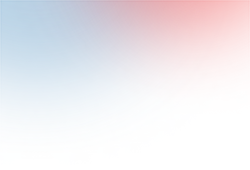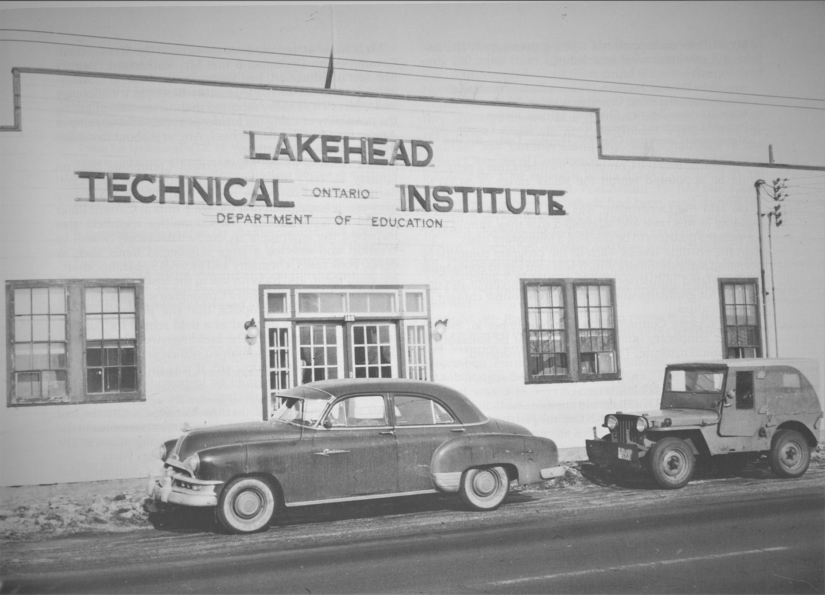
History of Lakehead Engineering
1946 – 1956
- Lakehead’s Faculty of Engineering has its origins in the Lakehead Technical Institute, which was established in 1946 to provide technical education to returning World War II veterans.
- The first and only program offered when the Technical Institute opened was a two-year program in Mining Technology. Twelve full-time students were enrolled. By the start of the new semester in September, a Forestry Technology program was added as well as first-year university credit courses in Arts and Science and Applied Science.
1956 – 1964
- In 1956, the Institute became the Lakehead College of Arts, Science and Technology offering courses in Engineering Technology, Architecture Technology, Forest Technology, Mining Technology and Medical Technology.
- In 1964, the Lakehead University Act was given Royal Assent by the Lieutenant Governor of Ontario establishing Lakehead University. In the very first Convocation, diplomas were awarded to students in Engineering Technology and Forest Technology.
1964 – 1974
- Lakehead’s largest capital campaign was launched in the mid-1960s to raise $3 million for a number of building projects including the new Centennial Building. Construction of the Centennial Building began in 1967 and was completed in 1971. It would become the home of the Faculty.
- The building was re-dedicated in 2007 as the William (Bill) Tamblyn Centennial Building in honor of the Founding President and Vice-Chancellor Bill Tamblyn.
- In 1970-71, the Engineering Students’ Society of Lakehead University (ESS) produced its first yearbook, titled deep purple that was edited by Bill Dann. You can download it from the Internet Archive.
- In 1972, the School of Engineering proposed an Engineering Degree program, that was unique in Ontario. The plan was that the Lakehead University School of Engineering would establish a two-year program leading to a Degree in Engineering for students who had earned a Diploma in Engineering Technology from one of the Colleges of Applied Arts and Technology, Ryerson Polytechnical Institute or Lakehead University. Students admitted to the program would be required to attend a full-time summer school preceding their first year.
- The proposal was contained within a Study of Engineering Education in Ontario called “Ring of Iron” produced by Dr. Philip Lapp, which recommended that “Lakehead University should establish a two-year full-time Engineering Degree Program specifically designed to accommodate diploma technology graduates.” Dr. J Murray Fleming, Chair of the Department of Engineering at Lakehead gained the support of the Ontario Deans of Engineering for the proposal.
- The program was approved and instituted at Lakehead University in the Fall of 1972.
- The first Bachelor of Engineering degrees to be offered are Chemical Engineering, Civil Engineering, Electrical Engineering and Mechanical Engineering. They have all received CEAB accreditation ever since.
- The first graduating class in 1974 was made up of Robert Chu, Garth Pattyson, Kin Mow, Ivan Sirman, and Donald Zieman (Chemical Engineering); Robert McLean, Robert Bowman, John Burstrom, Helm Eckhardt, John Gilhooly, John Green, Harry Jaako, Robert Klaas, Gary La Framboise, Charles McDonald, Blair O’Borne, Wayne Prystanski, Paul Quirt and Clarke Stephens (Civil Engineering); William Faucounnier, Michael Groulx, John Lung, Robert Black and Danny Simpson (Electrical Engineering); John Lyon, Donald Labine, John Ling, Raymond Roussy, and Joseph Vaskor (Mechanical Engineering).
- In the academic year 1981-82, the School of Engineering announced a plan to expand student enrolment numbers, from approximately 80 students to 150 students taking the total number of students from 430 to 500 in 1982-83, and up to 560 students in 1983-84. This plan also called for the addition of four faculty members in 1982-83, and one additional faculty member in each of the next three successive years.
- In 1985 the Engineering Structures Laboratory was constructed adjacent to the Centennial Building at a cost of $435,000.
2000 – 2023
- The ATAC (Advanced Technology and Academic Centre) building at Lakehead University opened in 2003. The building is a state-of-the-art facility that houses a number of academic programs, including the Faculty of Engineering, as well as the Faculty of Science and Environmental Studies, the Department of Computer Science, and the Department of Mathematics and Statistics.
- In 2011, the Civil Engineering Steel Bridge Team took first place at the 20th annual AISC/ASCE US National Student Steel Bridge Competition, beating 47 other universities from across North America. Lakehead was the only Canadian team to place in the top five overall since the inception of the competition and the first Canadian team to win the competition. The winning team was made up of Damien Ch’ng, Dave Enns, Cory Goulet, Chris Kukkee, and Kristen Myles, along with faculty advisors Dr. Tony Gillies and Dr. Timo Tikka.
- In 2017, the Faculty of Engineering began to offer Bachelor of Electrical Engineering (BEng) degrees in Barrie through the Lakehead-Georgian Partnership.
- In 2018, the Centre for Advanced Studies in Engineering and Sciences (CASES) building, a state-of-the-art research facility, opened on the Thunder Bay campus.
- In 2018, the Lakehead Engineering team, made up of Graham Robertshaw, Megan Eyben, Caleb Frisby and Zachary Kelly, placed first in the Senior Design Category at the Canadian Engineering Competition in Toronto.
- In 2023, Lakehead Engineering introduced a new Bachelor of Engineering (BEng) degree in Mechatronics Engineering to be offered initially in Thunder Bay and later in Barrie also.













